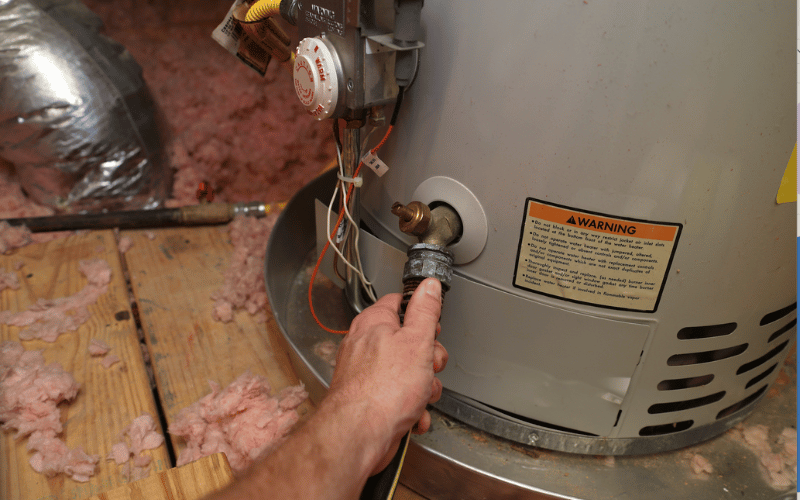The content below relating to Tips on Maintaining a Water Heater is rather stimulating. Don't overlook it.

Hot water is necessary for daily comfort, whether it's for a refreshing shower or washing recipes. To guarantee your warm water system runs effectively and lasts much longer, regular upkeep is essential. This article supplies sensible tips and insights on how to keep your home's warm water system to stay clear of disruptions and costly fixings.
Intro
Maintaining your home's hot water system may appear overwhelming, yet with a couple of simple steps, you can ensure it runs efficiently for several years ahead. This overview covers every little thing from understanding your warm water system to do it yourself upkeep pointers and recognizing when to employ specialist aid.
Relevance of Preserving Your Warm Water System
Regular maintenance not just expands the lifespan of your warm water system however additionally ensures it runs effectively. Disregarding upkeep can cause decreased efficiency, higher energy bills, and also premature failure of the system.
Signs Your Warm Water System Requirements Maintenance
Understanding when your warm water system requires interest can stop significant problems. Watch out for indications such as irregular water temperature level, odd noises from the heater, or corroded water.
Flushing the Water Heater
Purging your hot water heater removes debris accumulation, enhancing efficiency and prolonging its life.
Monitoring and Changing Anode Rods
Anode rods prevent deterioration inside the storage tank. Examining and changing them when broken is critical.
Complicated Issues Calling For Expert Help
Instances include major leakages, electrical troubles, or if your water heater is consistently underperforming.
Regular Expert Upkeep Conveniences
Expert upkeep can include thorough examinations, tune-ups, and guaranteeing conformity with security standards.
Inspecting and Readjusting Temperature Setups
Adjusting the temperature level settings makes sure ideal performance and security.
Do It Yourself Tips for Maintenance
You can execute several upkeep tasks on your own to keep your hot water system in leading condition.
Looking for Leakages
Frequently evaluate pipelines and connections for leaks, as these can cause water damage and higher expenses.
Recognizing Your Hot Water System
Prior to diving into maintenance jobs, it's useful to comprehend the standard components of your hot water system. Generally, this includes the hot water heater itself, pipelines, anode rods, and temperature controls.
Month-to-month Upkeep Tasks
Regular month-to-month checks can help catch minor problems prior to they escalate.
Evaluating Stress Alleviation Valves
Evaluating the pressure safety valve guarantees it operates correctly and avoids extreme stress buildup.
Insulating Pipes
Protecting warm water pipelines reduces heat loss and can save power.
When to Call a Professional
While DIY maintenance is useful, some problems need specialist expertise.
Verdict
Normal upkeep of your home's warm water system is essential for efficiency, longevity, and cost savings. By complying with these suggestions and recognizing when to look for expert assistance, you can make sure a trusted supply of hot water without unforeseen interruptions.
Water Heater Maintenance Tips
Test the TPR Valve
Shut off the power and the cold-water supply valve. Place a bucket under the pipe connected to the temperature-pressure-release (TPR) valve on the top or side of the tank. (This valve opens if the tank pressure gets too high.) Lift the valve’s tab to let some water out, then let go. If water keeps flowing, drain the tank partway, unscrew the old valve with a pipe wrench, and install a new one. Check the Anode Rod
Put a hose to the tank’s drain cock and let out a few gallons of water. Now fit a 1 1/16-inch socket onto the rod’s hex head on top of the heater (or under its top plate) and unscrew the rod. If it’s less than ½ inch thick or coated with calcium, buy a new one, wrap its threads with Teflon tape, put it back in the tank, and tighten securely. Use this segmented rod if headroom above the tank is limited. Drain the Tank and Wash Out Sediment
Drain the remaining water in the tank into the bucket, then stir up the sediment on the tank’s bottom by briefly opening the cold-water supply valve. Drain and repeat until clean water comes out of the hose. Close the drain cock, refill the tank, and turn its power back on. Adjust the Temperature
Find the temperature dial on the side of the tank and unscrew its cover. Adjust the dial to 120 degrees using a flathead screwdriver. For every 10 degrees the temperature is lowered, you can expect to save up to 5 percent in energy costs. Turn the water heater off or the thermostat down to its lowest setting if you plan to be away from home for more than three days. Insulate the Pipes
Buy some self-sticking 3/8-inch-thick foam pipe insulation that matches the pipes’ diameter. Slide the foam over the hot-and cold-water pipes as far as you can reach. Insulating the cold-water pipe prevents condensation in summer. Peel the tape and squeeze the insulation closed. If the pipe is 6 inches or less from the flue, cover it with 1-inch-thick unfaced fiberglass pipe wrap. https://www.thisoldhouse.com/plumbing/21016402/how-to-maintain-a-water-heater

We had been made aware of that article about Tips on Maintaining a Water Heater from a good friend on a different domain. For those who appreciated our page plz consider to share it. Many thanks for being here. Please come visit our website back soon.
Set An Appointment